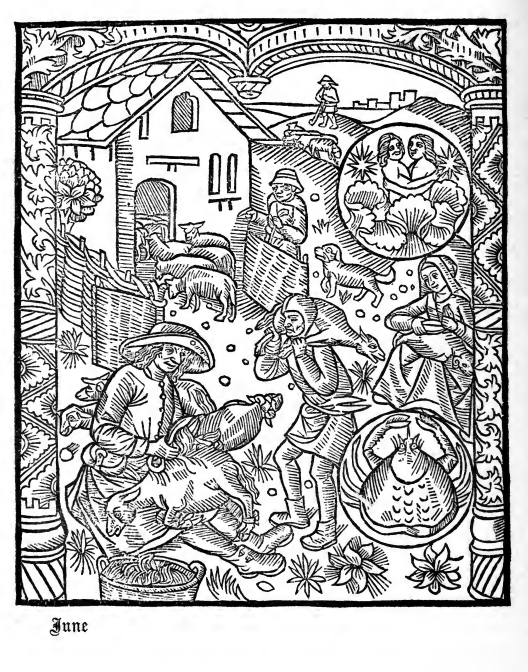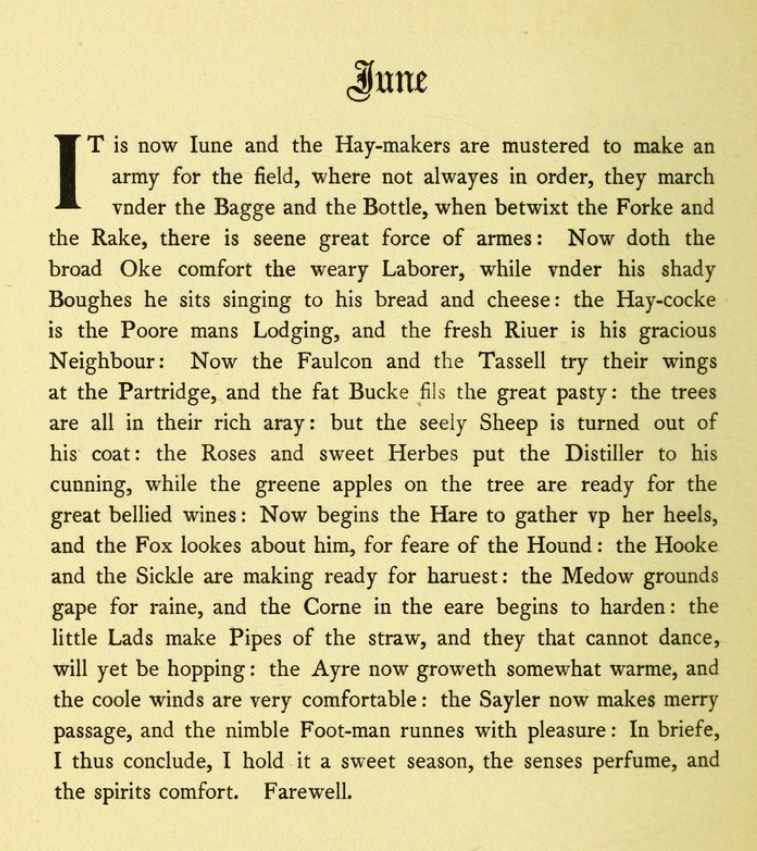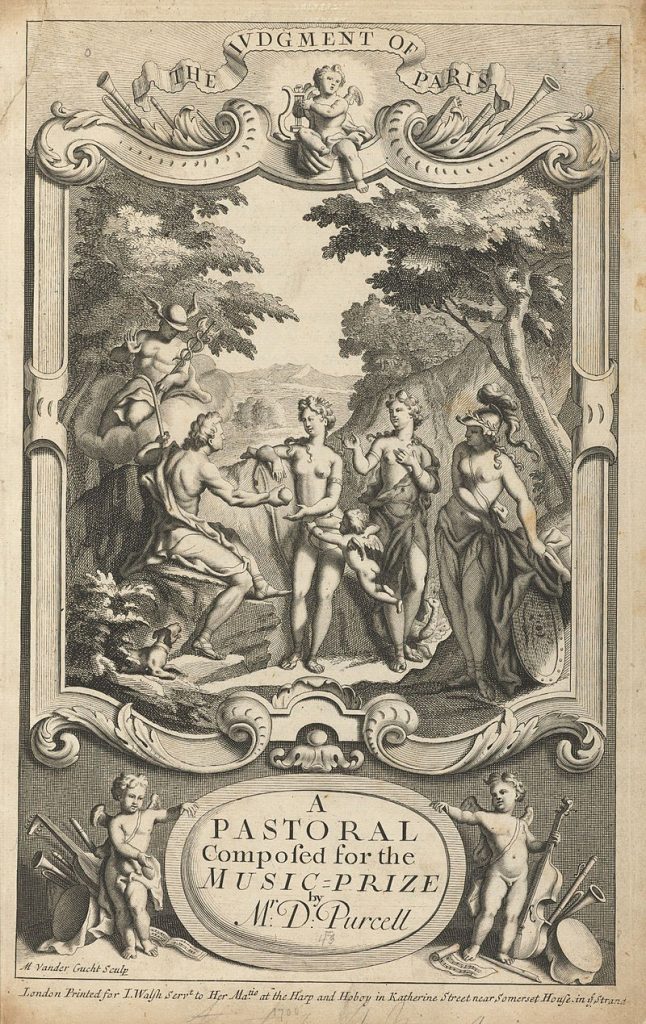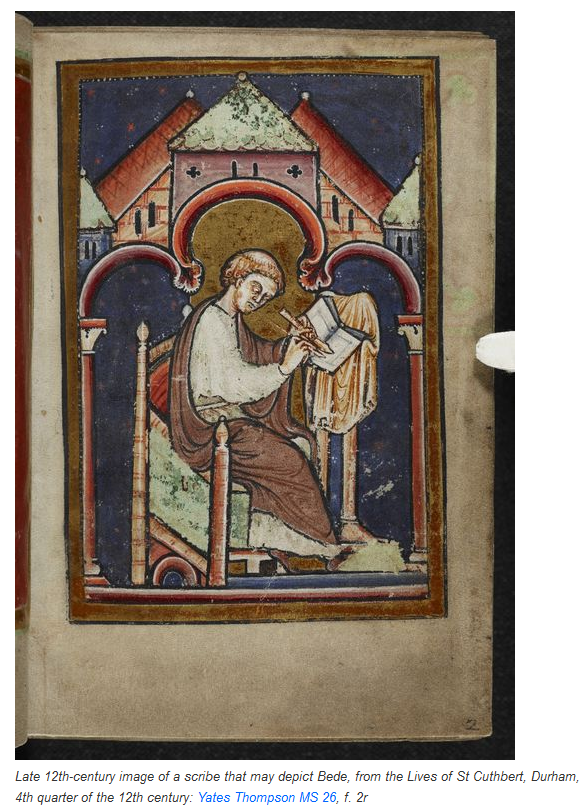
June is, probably, named after Juno, the leading lady of Olympus, sister and brother to the Great God Jupiter (Jove). In Welsh, it’s ‘Mehefin’ – Midsummer. In Gaelic, ‘An t’Og mhios’ – the Young Month. In Anglo-Saxon, ‘Litha’, the month of the Midsummer Moon.
I am in Ferrara where I worked on a joint UK/Italian excavation in the 1980’s. We are currently at a reunion, in the beautiful UNESCO World Heritage City. The weather is beautiful, and so are the people and the City! One of its gems is the Palazzo Schifanioa, which was the home of the Este Family, Dukes of Ferrara. Borso D’Este in the 15th Century initiated the frescos on the wall of the Hall of the Months. There is one for each month although not all survive in recognisable form. But above is June. The top panels show the Gods of the Month with their chariots or waggons. Below are the star signs for the month, and at the bottom a scene from 15th Century seen from an aristocratic perspective. June has a delightful agricultural scene. You will see more of these in future months. Although I won’t say much today as its difficult to do anything serious without a desk and a decent internet connection.

The picture above is from the Kalendar of Shepherds, with its 15th Century French Illustration. It shows shearing as the main occupation for the month but set within a flowery summer scene. In the roundels are the Gemini twins and the Cancer Crab, the star signs of June.

The text of the Kalendar of Shepherds gives a lyrical view of the joys of June:

June might come, not from Juno’s name, but from an Indo-European word for youth or vital energy. Ovid in Fasti, his poem about the Roman Year, lets Juno make her own case:
‘O poet, singer of the Roman year,
Who dares to tell great things in slender measures,
You’ve won the right to view a celestial power,
By choosing to celebrate the festivals in your verse.
But so you’re not ignorant or led astray by error.
June in fact takes its name from mine.
It’s something to have wed Jove, and to be Jove’s sister:
I’m not sure if I’m prouder of brother or husband.
If you consider lineage, I was first to call Saturn
Father, I was the first child fate granted to him.
Rome was once named Saturnia, after my father:
This was the first place he came to, exiled from heaven.
If the marriage bed counts at all, I’m called the
Thunderer’s Wife, and my shrine’s joined to that of Tarpeian Jove.
If his mistress could give her name to the month of May,
Shall a similar honour be begrudged to me?
Or why am I called queen and chief of goddesses?
Why did they place a golden sceptre in my hand?’
Translated by A. S. Kline © Copyright 2004 All Rights Reserved
In the previous Book (on May), Ovid told another story that June was named for young men.
‘So I deduce that the elders gave their own title
To the month of May: and looked after their own interests.
Numitor too may have said: ‘Romulus, grant this month
To the old men’ and his grandson may have yielded.
The following month, June, named for young men’
Gives no slight proof of the honour intended.’
The Latin for ‘Young men’ comes from the Latin iuvenis, “youth”)
But let’s not go into Indo-European roots, and let’s simply accept the most wonderful month is named after Juno, the Queen of Goddesses, the deity of marriage and women. Probably most famous for hating the Trojans – she had a grudge against Paris, as he ruled against her in that famous divine beauty competition. And more seriously, what other reaction can the Deity of Marriage, have to the man who showed such disregard for the sanctity of marriage that he ran away with the already spoken for Helen?

‘A sweet season, the senses perfume and the spirits comfort.’
First Written in June 2023 and revised June 2024, 2025


